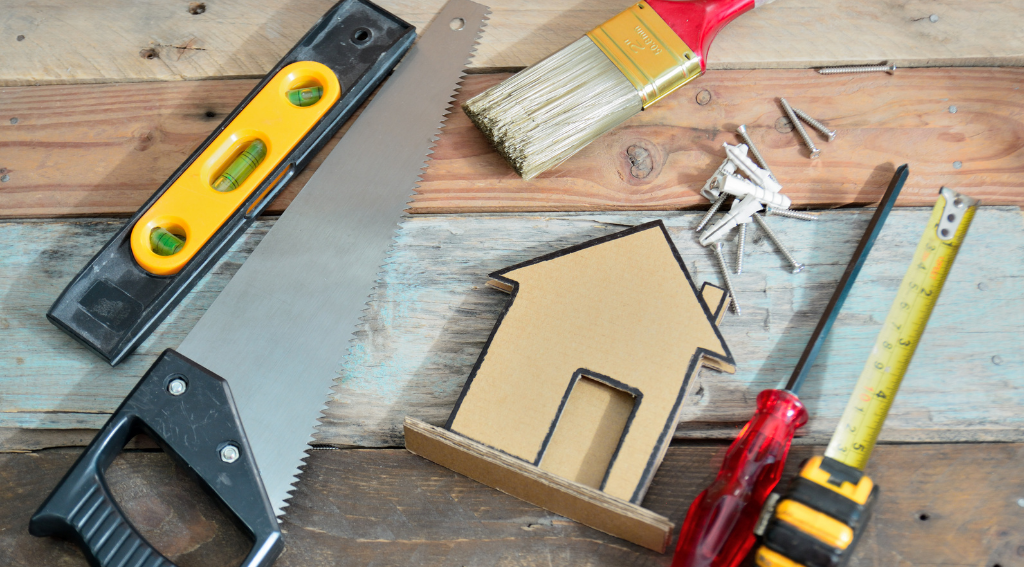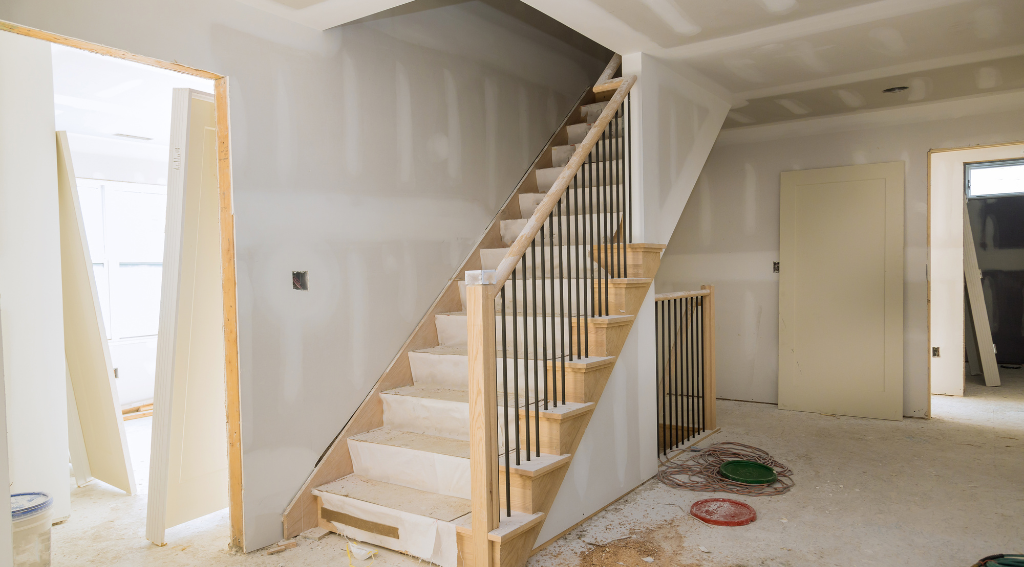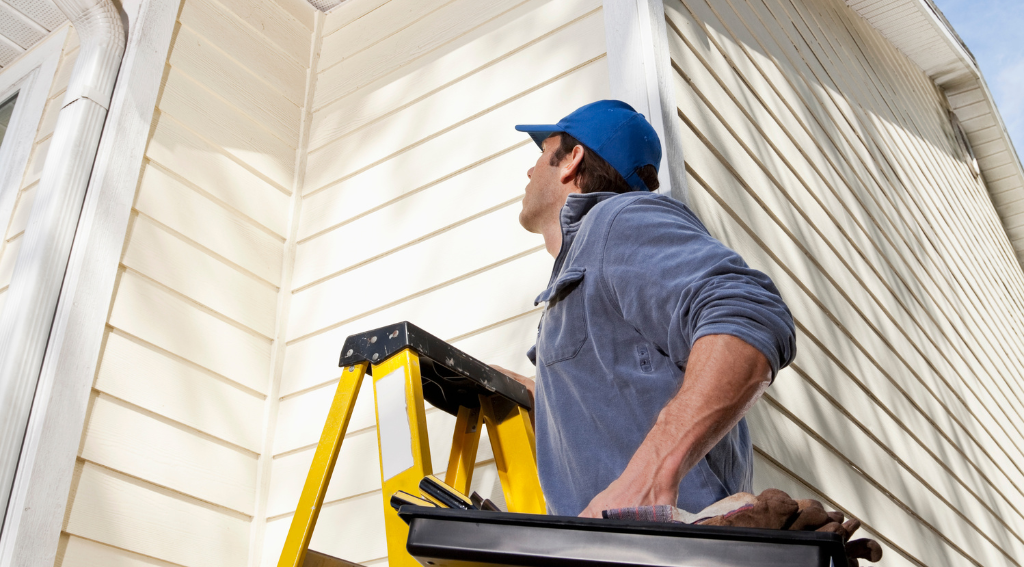Looking for some easy sustainable DIY home repair tips to help you make eco-friendly home improvements in 2024? We’ve got you! Every conscious choice you make, whether it’s choosing eco-friendly materials, conserving energy and water, or repurposing old items, has a cumulative impact on our environment. So, here is a list of the most eco-friendly home renovation tips. So, let’s get started!
Best sustainable living home DIY maintenance tips
It’s no secret that home repair and maintenance, while essential for the longevity of our living spaces, often come with a substantial environmental footprint. From the extraction of raw materials to energy-intensive manufacturing processes, traditional home repair methods contribute significantly to carbon emissions and resource depletion. Luckily, there are many sustainable DIY home repair options for simple and eco-friendly home improvements.
Whether you’re a seasoned DIY enthusiast or just starting to dabble in home repairs, these sustainable tips will not only enhance the longevity and efficiency of your living space but also contribute positively to the planet.
Eco-friendly building materials for DIY home repairs
Before we kick things off with our sustainable DIY home repairs, let’s talk about the important choice of materials. Opting for eco-friendly building materials is a cornerstone in reducing the environmental impact of home maintenance.
Recycled and reclaimed materials
Give discarded materials a second life by incorporating recycled and reclaimed elements into your home repair projects. Salvaged wood, bricks, and metal can add character to your space while minimizing the demand for new resources. Explore local salvage yards or online marketplaces for unique finds that contribute to a circular economy.
Sustainable wood options
Choose wood that has been sourced responsibly to support sustainable forestry practices. Look for certifications such as Forest Stewardship Council (FSC), indicating that the wood comes from responsibly managed forests. Bamboo is an excellent alternative as it grows rapidly, making it a renewable resource with minimal environmental impact.
Low-impact insulation choices
Improve the energy efficiency of your home by selecting insulation materials that have a lower environmental footprint. Opt for options such as recycled denim, cork, or sheep’s wool, which not only provide effective insulation but also reduce the reliance on energy-intensive manufacturing processes. These alternatives contribute to a well-insulated home while aligning with sustainable principles.
Most energy-efficient DIY Repairs for sustainable homes

Sealing drafts and air leaks
When it comes to energy efficiency, addressing drafts and air leaks is a low-hanging fruit with significant impact. By sealing these gaps, you not only enhance the comfort of your living space but also reduce energy consumption and, subsequently, your carbon footprint.
Weatherstripping and caulking techniques
Start by identifying potential areas where drafts may occur, such as around windows, doors, and gaps in walls. Utilize weatherstripping, a flexible material applied to the moving parts of doors and windows, preventing air leakage. For gaps in stationary areas, employ caulking to seal them effectively. Both weatherstripping and caulking are inexpensive, readily available, and simple to apply, making them ideal for a variety of DIY skill levels.
DIY window and door insulation
Enhance the insulation around windows and doors by utilizing cost-effective and eco-friendly materials. Draft stoppers made from recycled materials can be placed at the base of doors, preventing cold air from entering and warm air from escaping. Additionally, consider using window insulation film, a transparent layer that traps heat and boosts energy efficiency during colder months. These straightforward DIY solutions contribute not only to a cozier home but also to reduced energy bills.
Efficient lighting solutions
Lighting plays a crucial role in both the functionality and energy consumption of our homes. By making informed choices, we can significantly minimize our environmental impact.
LED bulbs and energy-saving fixtures
Make the switch to LED bulbs, which not only consume less energy but also have a longer lifespan compared to traditional incandescent bulbs. Energy-efficient fixtures, such as those with the ENERGY STAR label, provide stylish options for every room in your home. This simple swap not only reduces electricity consumption but also lowers the frequency of bulb replacements, contributing to less waste over time.
Smart home lighting controls
Embrace the convenience and efficiency of smart home lighting controls. These systems allow you to customize lighting schedules, adjust brightness levels, and even monitor energy usage remotely. Motion sensors and smart plugs can further optimize energy consumption by ensuring that lights are only in use when needed. By incorporating these technologies into your home, you not only reduce your environmental impact but also gain greater control over your energy usage.
Eco-friendly home renovation tips for water maintenance
Fixing leaks and drips
Start by conducting a thorough inspection of your plumbing system to identify and address leaks promptly. Common culprits include dripping faucets, running toilets, and hidden leaks. Fixing these issues not only conserves water but also reduces your water bill. Utilize readily available tools like wrenches and plumbing tape to tackle minor leaks, and consider seeking professional help for more complex problems. Also, remember that regular maintenance checks can prevent small leaks from turning into significant water wastage.
Installing low-flow faucets and showerheads
Upgrade your fixtures to low-flow alternatives to achieve substantial water savings without compromising performance. Low-flow faucets and showerheads maintain water pressure while reducing the overall volume of water used. These are often easy to install and can make a noticeable impact on your water consumption. Look for products with the WaterSense label, ensuring they meet water efficiency and performance criteria set by the Environmental Protection Agency (EPA).
DIY rain barrel setup
Harness the power of nature by collecting rainwater for various outdoor purposes. A DIY rain barrel offers a straightforward solution to harvest and store rainwater. Position the barrel beneath a downspout to capture runoff from your roof. Install a mesh filter to prevent debris from entering the barrel, and include an overflow valve to redirect excess water away from the foundation. This harvested rainwater can be used for watering plants, washing outdoor surfaces, and even flushing toilets, reducing your reliance on treated municipal water.
Watering systems for gardens and lawns
Optimize irrigation practices by implementing efficient watering systems. Drip irrigation, soaker hoses, and programmable sprinkler systems deliver water directly to the roots of plants, minimizing evaporation and runoff. Install rain sensors on automated systems to ensure they activate only when necessary, considering the current weather conditions. This thoughtful approach not only conserves water but also promotes healthier plant growth.
Choosing non-toxic and low-VOC paints
Traditional paints often release harmful VOCs into the air, contributing to indoor air pollution and potential health issues. Opt for paints labeled as low-VOC or VOC-free, as they contain fewer harmful chemicals. These paints are water-based and have a lower environmental impact compared to their solvent-based counterparts.
Choose water-based paints, which have a lower VOC content and are easier to clean up. Look for products that use natural pigments instead of synthetic dyes, further reducing the environmental impact. Many reputable brands now offer a wide range of colors and finishes in their eco-friendly paint lines, allowing you to express your style while being mindful of the planet.
DIY natural finishes and stains
Beeswax and olive oil wood finishes
Create a simple, natural wood finish by combining beeswax and olive oil. Melt beeswax and mix it with olive oil to achieve a smooth consistency. Apply the mixture to wooden surfaces for a protective and aesthetically pleasing finish. This DIY alternative not only avoids the use of harsh chemicals but also adds a warm and natural glow to your woodwork.
Coffee and tea stains for wood
For a unique and eco-friendly wood stain, consider brewing up some coffee or tea. Apply the cooled liquid to unfinished wood surfaces using a brush or cloth. This DIY stain provides a subtle and natural tint while avoiding the chemicals present in commercial wood stains. Experiment with different concentrations and types of tea or coffee to achieve the desired hue.
Upcycling and Repurposing in Sustainable DIY Home Repairs

Turning old furniture into something new
Give dated or worn-out furniture a second chance by transforming it into something fresh and functional. Sand down surfaces, apply a coat of eco-friendly paint, or experiment with decoupage techniques. Consider repurposing a wooden pallet into a stylish coffee table or converting an old door into a headboard. The possibilities are endless, and the process allows you to showcase your creativity while contributing to a more sustainable home.
Repurposing household items for functional repairs
Before discarding items, explore opportunities to repurpose them for functional repairs. Scratched CDs can be turned into reflective mosaic tiles, and old wooden crates can become stylish wall shelves. Get creative with mismatched or broken ceramics, transforming them into a unique mosaic tabletop. This approach not only minimizes waste but also adds character to your living space.
Reclaimed wood for shelving and repairs
Utilize reclaimed wood for various DIY projects, such as constructing new shelves or repairing existing ones. Salvaged wood from pallets, old furniture, or construction sites can be cleaned, sanded, and repurposed into stylish and functional additions to your home. This not only reduces the demand for new materials but also adds a rustic and personalized touch to your space.
Old doors and windows for room dividers
Transform old doors or windows into unique room dividers or privacy screens. By repainting or refinishing them, you can create a functional and visually appealing partition. This DIY solution not only repurposes materials but also adds architectural interest to your home.
More Sustainable DIY Home Improvement Projects to Consider
Solar panel installation
Harness the power of the sun by embarking on a solar panel installation project. Solar panels convert sunlight into clean, renewable energy, reducing your reliance on traditional power sources. Consult with a professional to assess your home’s suitability for solar panels, and explore government incentives that may make this eco-friendly investment more affordable. Not only does solar power lower your electricity bills, but it also significantly decreases your carbon footprint.
Creating a composting system
Transform kitchen and garden waste into nutrient-rich compost through a DIY composting system. Designate a space in your backyard for a compost bin or consider indoor composting with specially designed containers. Composting not only reduces the amount of organic waste in landfills but also provides a valuable resource for enriching your soil. Get started by composting fruit and vegetable scraps, coffee grounds, and yard waste, and watch as your kitchen and garden thrive with sustainable nourishment.
Installing a greywater recycling system
Maximize water efficiency by setting up a greywater recycling system. Greywater includes water from showers, sinks, and laundry, which can be treated and repurposed for non-potable uses like watering plants or flushing toilets. DIY greywater systems are available, ranging from simple setups to more sophisticated filtration processes. This not only conserves water but also reduces the strain on municipal water treatment facilities.
Conclusion
There you have it – the easiest sustainable DIY home repair and maintenance tips for eco-friendly home improvements. Opt for recycled, reclaimed, and responsibly sourced materials in your home repair projects to reduce environmental impact. Don’t forget to seal drafts, upgrade to energy-efficient lighting, and incorporate smart controls to minimize energy consumption. It’s also very important to fix leaks promptly, install low-flow fixtures, and implement rainwater harvesting for outdoor use to conserve water resources. By following these eco-friendly home renovation tips, you not only enhance the longevity and efficiency of your living space but also contribute significantly to a healthier planet.

About Author
Konstantina Antoniadou
Sustainability writer, with almost ten years of expertise in media and publishing. Focused on helping conscious readers discover the best fashion, skincare & non-toxic home products on the eco market. Her work has been featured on various digital magazines and blogs, and she continues to strive towards making a positive impact through her writing.
